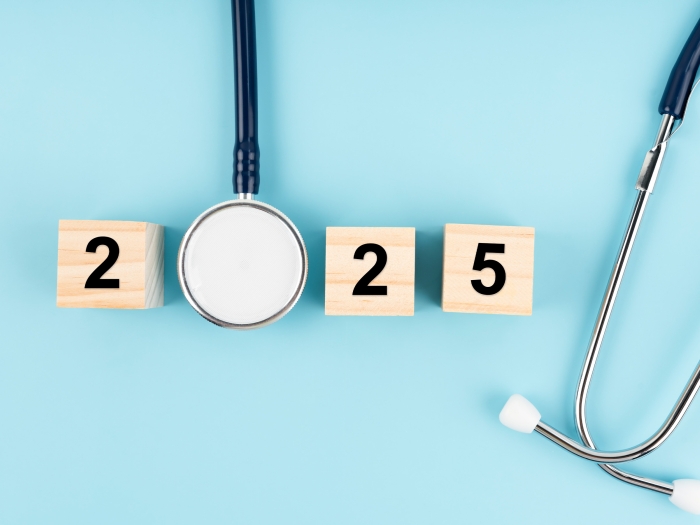1:53 PM
Author |
Michael was an eclectic 13-year-old boy that I met during my time as an undergraduate in Biomedical Engineering at Michigan. He was often the loudest, proudest voice in the room and always primed with sporadic conversation topics. As a below-elbow amputee, he had just three design requirements for the 3D-printed prosthetic arm that a team of students and I spent a year creating for him. "Make sure I can tie my shoes with it, make it look like the Terminator's bionic arm, and make sure I can do multiple pull-ups." Could a plastic, multicolored, actuated arm design by engineering students accomplish this? To Michael, his disability was really an opportunity to create an assistive medical device that others would marvel at.
An example of a low-cost 3D-printed prosthetic hand made by students at the University of Michigan.

This was my first-ever customer discovery interview. It launched me into a focus on 3D-design, additive manufacturing, and biomechanics during my education. With abundant open-ended design problems in healthcare and engineering, my experience at Michigan taught me to meticulously explore design features, learn to develop the skills needed for a project, and leverage the bright minds and endless resources around me to avoid settling on the answer, "it can't be done." I related to Michael in that, when I was a young boy, I never wanted to hear no as an answer. Today, I try to approach innovation, frustrations, and even daily life setbacks with a "challenge accepted" mindset. I hope to serve my patients and colleagues to my full potential with this in the future.
After I started my first year of medical school at the University of Michigan, my first thought was, "well, there goes my engineering degree!" We don't always cover complex fluid models of the body's vasculature or learn about in-depth mechanics of interactions between bones/joints (I'm sure my classmates are grateful). We learn practical ways to diagnose, treat, and understand why diseases behave the way they do. But beyond coursework, I have found many ways to keep my spirit of innovation fueled at Michigan. The first was Sling Health, where we formed a project team led by my fellow M1, Danika.
Danika shares my spontaneity in thought, my level of detail in drafting emails, and my desire to painstakingly and completely explore ideas. She brought us together around the goal of addressing a pressing need in healthcare: development of a non-invasive anticoagulant solution that improves extracorporeal membrane oxygenation outcomes and lower costs. ECMO is a technology that acts as an artificial heart or lung for critical care patients who cannot provide enough blood flow or oxygenation on their own. Preventing blood clotting complications within ECMO circuits has great potential to prevent strokes, pulmonary emboli, and numerous other costs and downstream effects.
Our team members also include engineering and business students: Liam, Nundini, Carol, and Noor, who all have experiences ranging from venture capital, research in coagulation and thrombosis, robotics, and even ECMO itself. I absolutely admire Danika's dedication to involve all members of our team and regularly find resources to support members who are new to ECMO and engineering design. As future physicians, the need to explain complex topics in streamlined ways is so important, and being part of a multidisciplinary team necessitates this. Soon enough, we branded ourselves "EmboFlux."
Almost immediately, we ran into limitations. It would be much easier to create a device that detects clots rather than dissipates them. Biocompatible device regulatory cycles are also incredibly lengthy and costly if our device was required to interface with blood in any way. Numerous customer discovery interviews pointed this out to us. Time and resources are a major barrier for startups or device design groups. But by exploring prior patent art and recent developments in anticoagulation therapies, our team found a novel way for reducing anticoagulation without directly contacting blood, which allows us to shorten the regulatory timeline and save costs. This was an idea that many clinicians and ECMO researchers were supportive of.
Our team initially competed in the campus-wide Michigan Business Challenge. We've received great support and mentorship from Anne Perigo at the Zell Lurie Institute, who worked with us to refine and pitch the importance of our design problem to judges and investors. Anne never hesitated to meet with our team weekly or recommend further individuals to contact for support. What I admire about Emboflux is that our members leveraged almost every resource available to conduct research before launching into device design. We thoroughly defined our problem, referenced existing literature, devised market estimates, and explored competitive solutions. EmboFlux was fortunate to make it to the semi-finals of the Michigan Business Challenge, and we look forward to competing again in future years!
I remember a conversation I had with Danika within our first few months. We marveled at how open and supportive the Michigan Medicine community was to us when we were seeking advice on device design, clinical adaptation, and even devising our first few research studies for the EmboFlux prototype. With a mix of initial intimidation but also intrigue, I truly believe medical school is a great time for innovation. In our flexible M1 curriculum, Danika and I can schedule device tests or attend pitch competitions during the week and complete our curricular requirements and assessments around our schedule, even into the weekend. This has made it easier for us to balance the many duties of a design team with the responsibilities of medical students. The Extracorporeal Life Support Lab at the University of Michigan has also been incredibly supportive in allowing us to conduct tests and receive feedback on device design.
From left to right, Danika Meldrum, Carol Dai, Liam Mathews, Nundini Rawal, and Jasnoor Singh. This is a photo of our team after competing in the Michigan Business Challenge held at the Ross School of Business.

While many of us are new to surgical settings and adapting medical devices effectively, our team also took part in the Surgical Innovation Discovery Course through the Center for Surgical Innovation. Here, we received guidance in prototyping Emboflux for clinical adaptation and conducted more customer discovery interviews to showcase our design and aim for perpetual refinement. With device design comes continuous iterations and regular communication with experts to add modifications or features. Customer discovery will remain a vital part of our team moving forward, and it's also incredible that we can think of many more stakeholders and bright minds at Michigan we have yet to meet, and that they would have such insightful input for our EmboFlux device. With feedback and advice from Candice Stegink, Jon Campbell, and the many surgical solution experts through SIDC, we really developed a clearer picture of how EmboFlux could find its way to ICUs and ECMO patients without disrupting existing workflows. The healthcare setting provides a whole new set of design criteria I've never really experienced in past projects. It has thus been super valuable to have resources like residents, surgical mentors, and researchers so close for advice.
In April 2023, our team was invited to present and pitch EmboFlux at the National Sling Health Demo Day in St. Louis. It was here that we presented our work exploring our clinical problem, market, and initial benchtop studies in a five-minute on-stage pitch. While we were anxious about our presentation or about the questions judges might counter with, we were excited to interact with many individuals who were incredibly curious about EmboFlux. Ranging from surgeons literally on call during the event to undergraduate students, we walked away with numerous contacts for future potential collaborations. We also witnessed presentations from up-and-coming medical devices all designed by future engineers, doctors, and innovators. After an incredible pitch from our spokespersons, Liam and Danika, we were so grateful to have received the National Demo Day's 1st place award and audience choice for best pitch!
Beyond these experiences, numerous other spaces and opportunities within our medical school will allow me to continue exploring my interests in engineering and design through the Innovation and Entrepreneurship Path of Excellence, I have already gained vital exposure to design thinking principles and effective interview strategies. Recently, we received the opportunity to interact with patients and brainstorm a user-specific design solution in an ongoing process. I was able to see my colleagues shine and show their willingness to fully explore a healthcare concern prior to proposing innovative ideas. My fellow classmates truly are so multi-faceted, and the field of innovation and design is so fulfilling, even for anyone who may not have a technical background. Your curiosity and novel ideas are always welcome!
In the future, I hope to work on medical device design in low-resource areas, where user-friendly, low-cost, and quickly adaptable engineering devices can be beneficial to address healthcare concerns for underrepresented patients. I look forward to clinical rotations in the coming year, where I will develop even more exposure to workflow and areas of innovation possible in a healthcare setting. Our EmboFlux team also looks forward to further pitch competitions, solution refinement workshops, and helping prevent many complications of ECMO procedures!

University of Michigan Medical School
Want top health & research news weekly? Sign up for Health Lab’s newsletters today!





